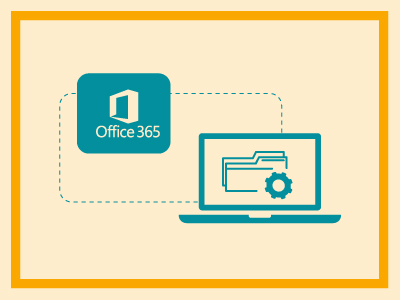Microsoft stopped supporting Office 2010 late last year. Many businesses have a hard time keeping up with patches and upgrades during the best of times, so it’s understandable if you haven’t yet addressed this. But the end of support should be handled as soon as possible in order to ensure you have continued support and protection from vulnerabilities.
Office 2010 End of Support Means Lack of Services
There’s no loss of the functionality of Office 2010 with the end of support, but there are three critical services that have gone away:
- technical support
- bug fixes
- security patches
Office 2010 End of Support Options
The first option is to do nothing, as the software still “works”. In most cases, this is a bad idea, because the lack of security patches means even if new vulnerabilities are discovered, they won’t be corrected.
Instead, businesses should select a path for getting on a supported version of Office. Office 2013 will reach end of support in 2023, so picking it means another upgrade project in the near future. As a better choice, businesses can migrate either to Office 2019 or to Microsoft 365.
Microsoft 365
Microsoft 365 is a subscription product, with charges per user. It receives regular security and feature releases. It includes all the Office functionality of Word, Excel, PowerPoint, and Outlook, plus Microsoft Teams and OneDrive. Depending on the size on the business, you can opt for versions of Microsoft 365 that also include Access, Exchange, and SharePoint. Support will be ongoing as long as the subscription is maintained.
Office 2019
Office 2019 is a one-time purchase of a perpetual license tied to a device. While it continues to be supported by Microsoft, it does not receive feature updates, and its functionality reflects the product as of its release in 2018. Office 2019 is not as comprehensive as the subscription model, and doesn’t include the functionality of SharePoint Designer or OneNote. You are required to install the software on the C:\ drive, which can cause problems for businesses that manage software differently. The only operating system it runs on is Windows 10, so you may need to upgrade from Windows 7 if you haven’t yet. In addition, Office 2019 cannot be activated without an internet connection. Support is scheduled to end in 2025.
Upgrading to Microsoft 365
For most businesses, Microsoft 365 is likely to be the more appropriate choice. In order to succeed, make sure your computers meet the system requirements. It’s a good idea to test critical macros, add-ins, and complex spreadsheets to verify they’ll work in the new application. Determine your deployment method and plan for user access management. In addition, you’ll want to decide how often users receive Office updates.
Prescient Solutions is a Microsoft Gold Partner with expertise in all aspects of Microsoft Office support. Contact us for help migrating from Office 2010 to ensure your business is using a supported version of this critical business software.


